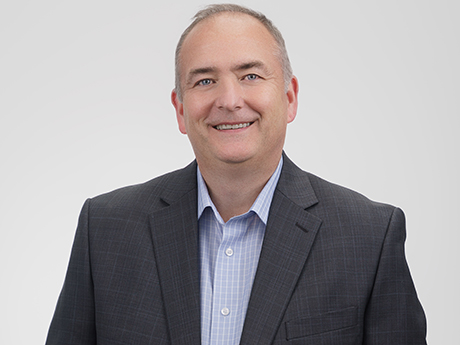By Ray Yancey
The American Lung Association’s recent “State of the Air” report shows that millions of adults age 65 and older live in high-risk areas in terms of levels of outdoor ozone, particle and other pollutants.
Cleaner, healthier air — both outside and indoors — should be a priority. Architects and designers have an important role when creating senior living communities to help residents live longer, healthier lives. This includes air quality. When collaborating with senior living community owners and operators, commercial design and planning groups should identify the latest best practices, design concepts and features to address air quality and quality of life for seniors.
Passive House is a voluntary design standard established by the International Passive House Association for quality, comfort and energy efficiency. In the senior living context, Passive House design delivers environmental benefits and enhanced wellness outcomes through superior air quality, thermal comfort, and protection from external environmental pressures that can affect buildings. Passive House design not just a trend, but a standard that should be adopted in the interest of more sustainable, energy-efficient and healthy environments.
Terwilliger Plaza
This holistic approach to sustainability and resident wellbeing has resulted in a groundbreaking example for the entire sector — Terwilliger Plaza in Portland, which marks the largest Passive House senior living project in the U.S.
Terwilliger Plaza’s continuing care retirement community campus (CCRC) includes a 10-story independent living residence called Parkview; a 12-story residential Tower; an eight-story apartment home complex, The Heights; assisted living community The Terrace; residential care community The Metcalf; and many shared community spaces.
Parkview at Terwilliger Plaza earned Passive House Institute (PHIUS) certification in May 2025, setting new benchmarks for resident wellness and environmental performance. This pioneering project demonstrates that rigorous sustainability standards can be successfully implemented at scale in senior living.
The breakthrough came in recognizing that the strategies required to meet Passive House standards — an airtight building envelope, enhanced insulation, triple-glazed windows with sun control, precisely controlled ventilation, energy-efficient mechanical systems, LED lighting, rooftop photovoltaic panels, and green roofs — would create exactly the kind of stable, healthy indoor environment that senior residents need most. The building’s sealed exterior does not just prevent energy loss; it provides unprecedented control over air quality, temperature and humidity.
The design directly addresses some of the region’s most pressing environmental challenges. The Pacific Northwest’s increasing wildfire activity and extended periods of reduced air quality create urgent needs for senior living facilities that can maintain healthy indoor environments regardless of external conditions. Parkview’s advanced filtration and sealed building envelope provide a solution that protects residents from these growing threats while maintaining energy efficiency.
The engineering behind this protection is sophisticated yet elegant. The building’s balanced, continuous ventilation system filters all incoming air, while the sealed envelope prevents outdoor pollutants from infiltrating through cracks and gaps. Triple-glazed windows preserve the stunning views that make Parkview’s location so desirable while providing exceptional insulation. Enhanced wall and roof insulation creates a thermal barrier that maintains consistent temperatures throughout the building.
This level of environmental control addresses a critical but often overlooked challenge in senior living. Older adults are particularly sensitive to temperature fluctuations and require consistent climate control during evenings and overnight hours, especially during extreme weather. Traditional buildings struggle to maintain these conditions efficiently, leading to uncomfortable temperature swings and high energy costs.
Parkview’s Passive House design eliminates these problems entirely. The building maintains perfect comfort conditions around the clock, while using 42 percent less energy than conventional senior living facilities. When extreme weather events challenge regional infrastructure — such as the excessive heat that increasingly affects the Pacific Northwest — Passive House buildings provide resilient performance without the energy spikes that can strain local power grids.
Cost Savings and Comfort
The financial impact has been equally impressive. While Passive House construction for Parkview at Terwilliger Plaza required a modest 2.5 percent upfront premium, the building delivers approximately $100,000 in annual energy savings. This return on investment improves every year as energy costs rise. The project also qualified for environmental, social, and governance (ESG) bonds, saving an additional $1.5 million in financing costs.
The Passive House approach has created a new model for senior living that addresses multiple challenges simultaneously. The same sealed envelope that prevents energy loss also blocks outdoor pollutants and noise, creating healthier, quieter and more peaceful living spaces that result in a big impact on quality of life. The controlled ventilation system eliminates drafts and hot or cold spots that could make residents uncomfortable. The stable indoor environment supports better sleep and overall health outcomes.
Parkview proves that these strategies can be successfully scaled to meet the needs of major communities while maintaining the personal touch that makes senior living special. The timing could not be more critical. As climate change intensifies extreme weather events and air quality challenges, buildings like Parkview offer a template for resilient senior living infrastructure. The same features that make the building energy-efficient also make it more adaptable to changing environmental conditions.
The highest standards of sustainability can enhance, rather than compromise, the resident experience, establishing a new benchmark in senior living design. The Parkview model, which involved collaboration between Terwilliger Plaza, PAE Engineers, Walsh Construction, LRS Architects and others, provides a great template for the future of senior housing, combining community leadership with excellence in architectural design.
Ray Yancey is a principal at LRS Architects.

